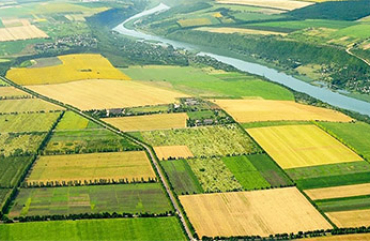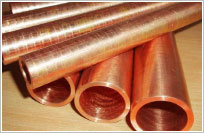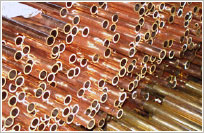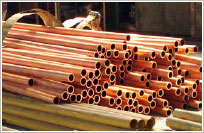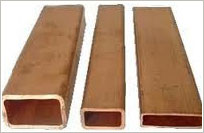Copper pipe GOST 21646
- NON-FERROUS METALS
- General information
- About us
- Rolled COPPER
- Rolled Copper
- Oxygen-Free copper
- Oxygen-free copper M0b
- Copper rod
- Copper rolled metal
- Copper seam roofing
- Copper metal roofing
- Copper shingles
- Copper roofing sheet
- KME copper roofing
- Copper roofing TECU
- Copper roofing M1f GOST 495
- Copper roll
- Roofing made of copper M1f GOST 1173
- Patinated copper TECU (oxidized copper)
- Other rolled cooper
- Copper wire
- Copper welding wire
- Tinned copper wire
- Wires copper winding
- Copper wire electrical
- Enameled copper wire (enameled wire)
- Copper square
- Copper profile
- Copper Angle
- Profiles of copper M1
- Profile Copper M2
- Copper rods
- Circle copper M1r
- Cooper circles M3
- Copper circles M2f
- Cooper rods M3R
- Copper circle M1f
- Rod copper M1
- Rod copper M2
- Copper hexagon
- Pipes made of copper
- Copper pipe GOST 21646
- Copper tube GOST 16774
- Copper pipe profile
- Copper pipe rectangula
- Copper-nickel pipes
- Copper pipes and fittings GOST R 52318
- Copper pipe for underfloor heatin
- Copper pipes for water supply
- Copper pipes for heating
- Copper pipe GOST 617
- Copper tubes annealed
- Copper pipe seamles
- Copper pipe annealed
- Copper pipe thick-walle
- Cooper thin-walled pipes
- Pipes made of copper GOST 2624
- Copper capillary pipes Group B
- Copper capillary pipes Group A
- Flat rolled copper
- Copper tape GOST 1173
- Tape Copper M2
- Tape copper electrical
- M1 Copper tape
- Soft copper tape M1
- Copper plate GOST 1173
- Copper plate M1
- Copper strip GOST 495
- Cooper band M1
- Copper foil GOST 5638
- Copper Foil M1
- Copper sheet GOST 495
- Copper sheet M1r
- Copper sheet M1r
- M2 Cooper sheets
- Copper ingot
- Copper MB (vacuum copper)
- Copper MK
- Electrical copper M1E
- Copper ingots
- M1 copper ingots
- Copper cathode
- Cathode copper m2K
- Copper cathodes M0k
- Copper cathodes M00k
- Copper Cathodes M1k
- Copper powde
- Copper nanopowder
- Copper powder superfine PMVD
- Ultrafine copper powder PMU and others
- Electrolytic copper powder
- ICP-1 Copper powder
- Cooper grid
- The alloy of copper-phosphorous
- Copper phosphorous MF9
- Phosphor copper MF10
Copper pipe GOST 21646
The use of copper and its alloys for the manufacture of pipes began in the 19th century. All the advantages of this unique material is available: a high thermal conductivity levels, excellent durability, copper is not oxidized and does not form rust, allowing the internal surface of the pipes do not become clogged and do not corrode even when exposed to highly corrosive environments. That is why the copper pipe gets its widely used in various fields.
The pipe is used in complex heat exchangers. Modern copper pipe withstands high temperature and hydraulic load, ensuring correct operation of the heat exchangers. For standardization and quality control of copper pipe is made in strict accordance with GOST 21646. Increased requirements for strength and other parameters of the pipes due to their specific application, which ensures safe operation of complex and expensive equipment in the future. For copper pipe must withstand maximum loads without breaks, bruises and cracks, tensile residual stresses have not, it must not break during flattening. To meet all the requirements of the limits of allowable loads, the copper pipe is thoroughly tested by hydraulic pressure, flattening deformation, load at break, etc. Monitors for the presence of internal and external defects. Cracks, voids, etc. Strict chemical composition of copper and brass alloys in the manufacture of pipes as per GOST 21646 provides a full set of distinctive strength and plastic-deformation properties inherent in these products. And only passed all the required tests, copper pipe reaches the consumer.
|
|
|
|
|
|
|
|
|
|
|
|
|
|
|
|
|
|
|
|


